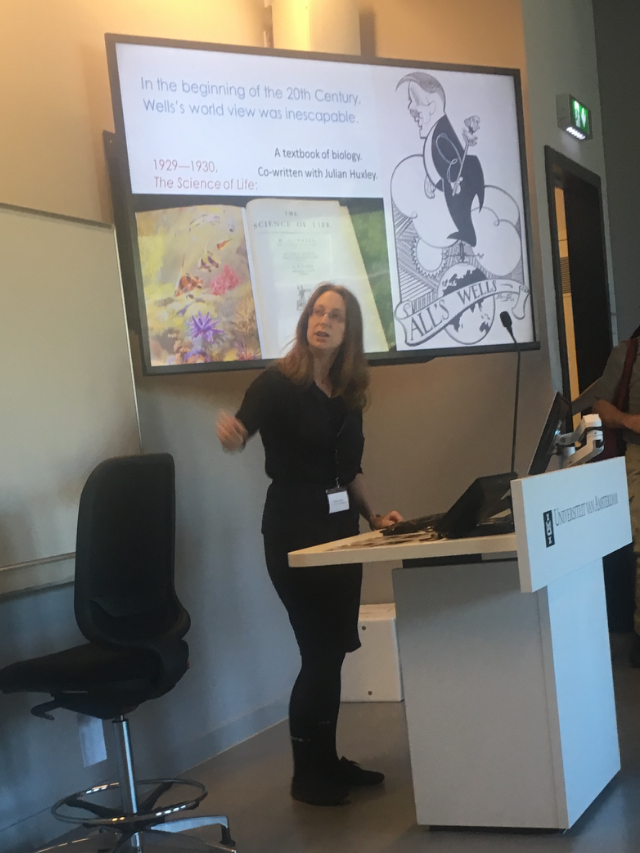Make a Submission
ESIC at the Human Behavior and Evolution Society conference in Amsterdam, July 2018

The Human Behavior and Evolution Society (HBES) is the main professional organization for evolutionary social scientists. It got started some 30 years ago, when a few sociobiologists at three or four universities annually loaded up their students into car caravans and met at one university to share their research. This year’s meeting in Amsterdam had more than 500 participants. In the past three decades, evolutionary studies in human behavior has grown from a few relatively isolated, pioneering scientists to a world-wide network of graduate programs and institutes.
I’ve been going to the HBES conference off and on since 1994. Napoleon Chagnon, the great sociobiological anthropologist who did research on the Yanamamo of Venezuela, called me on the phone and said he’d seen a paper of mine circulating on back channels and had a bet with Don Symons, who wrote the first book using Trivers’s theory of differential parental investment to study evolved human sexuality (The Evolution of Human Sexuality 1979). Symons had made a bet with Chagnon that I did not actually exist. He believed that no literary scholar would invoke evolutionary theory the way the author of that paper had. Symons thought the paper was probably a hoax perpetrated by Robin Fox, an evolutionary anthropologist with wide-ranging literary and cultural interests. But no, Robin and I both existed, and in fact we both showed up, at Napoleon’s invitation, at the HBES meeting in Ann Arbor, Michigan in 1994.
The evolutionary humanities have always been welcome at HBES, but the meeting has also always been challenging—different kinds of training, different methodologies. The humanists have slowly assimilated some empirical methodology, and the social scientists have slowly caught glimmerings of the peculiarly human aptitude and need for imaginative culture.
Imaginative culture was the overarching topic of the panel at which I and associate ESIC editor Emelie Jonsson presented papers. I talked about recent research on the evolution and neurology of imagination, placing “imaginative culture” in the current burgeoning research on evolutionary cultural theory. Emelie talked about H.G. Wells, one of the first imaginative writers to have made literary art out of his confrontation with evolutionary theory. (Wells had been a student of T. H. Huxley, “Darwin’s Bulldog.”) Primatologist and comparative psychologist Dario Maestripieri described four European authors who had made an overt program of illustrating Darwinian psychology in their novels. Evolutionary psychologist Catherine Salmon used images from professional wrestling to illustrate male competition. Catherine is an aficionado of professional wrestling and of popular culture generally. The fourth issue of ESIC, forthcoming before Christmas, features Catherine’s overview of evolutionary studies in popular culture.
Academic Studies Press was one of the sponsors for the HBES meeting, and ESIC had a table at the book display. We gave out sample copies and talked with evolutionists who described their secret lives as readers of novels, watchers of movies, and lovers of art and music. With ESIC available as a venue, those secret lives will be coming more out into the open.





Dario Maestripieri



